
Answering the Call of Duty during the Second World War
This year's instalment of Call of Duty aims to bring the series back to its roots with the arrival of the rather lazily, straight to the point: Call of Duty WWII. It was only fair to delve back into the history of the franchise and talk about what made the previous World War II entries so groundbreaking.
In the early days the series had a cult following, way before the ludicrous exploitation from Activision, with its half-baked ideas, all force fed with loot boxes and microtransactions.
From the assault of Pointe du Hoc on D-Day to the Battle of Stalingrad. Call of Duty’s classic history of putting the player in the boots of a soldier during the war has made for not just a captivating experience, but introduced many such as myself to explore the true history of the war beyond gaming.
So here it is: my rundown of the original entries into the series, alongside a bit of development history. While it’s not a countdown of my favourites, I will certainly give some recommendations.
Honourable Mention: Medal of Honor: Allied Assault (2002)
Now, this is a surprise for the first entry. Before Call of Duty, one other shooter redefined the cinematic first-person genre and that was Medal of Honor. Starting in the early days of the original PlayStation, Medal of Honor was the brainchild of Steven Spielberg and Dreamworks Interactive after the critically acclaimed movie, Saving Private Ryan.
Among the developers tasked by publishing partner EA was 2015, Inc. With their experience in heavily modifying the Quake engine, the team developed 2002’s Medal of Honor: Allied Assault. Not only a technical achievement for the team on PC but also was the substantial breakthrough for the series, which previously had garnered success on the PS1.
From here on, EA knew they had a winner on their hands, but as still ever apparent today, EA began its corruption of the studio leading to many leaving to form their own. Establishing in late 2002 and partnered with Activision, that new studio was Infinity Ward.
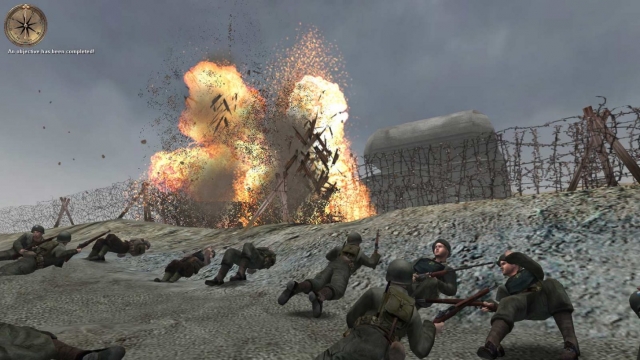
Call of Duty (2003)
Arriving in October 2003, the first Call of Duty was released for PC. As direct competition to Medal of Honor, Call of Duty’s campaign spanned across the second World War, putting players in the role of three protagonists across three uniquely designed campaigns. Throughout, you’ll play as an American paratrooper taking part in Operation Overlord, a British SAS officer during the sabotage of Eder Dam - also our first introduction of the iconic Captain Price - and the role of a young Russian volunteer during the Battle of Stalingrad.
For the time Call of Duty established itself as a story of heroism and combined arms. With clear movie influences, players felt like part of the war fighting alongside their fellow comrades as opposed to the traditional “lone-wolf” experience other shooters offered.
The first Call of Duty was also one of my first forays into competitive multiplayer, with a popular player base that offered both large-scale battles and close-quarter combat. It provided many hours of enjoyment and almost became an addiction; as I hosted and played the map Harbor with bolt-rifles only all day long.
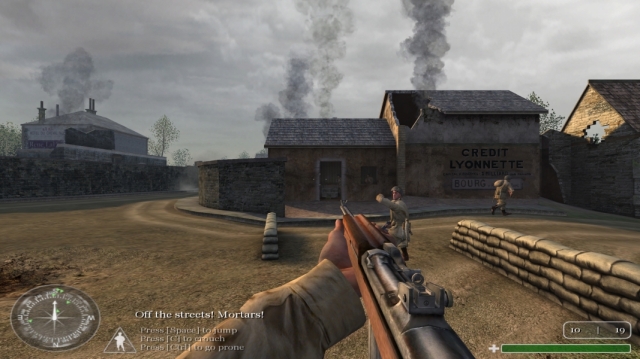
Call of Duty 2 (2005)
2005 saw the arrival of its first sequel, Call of Duty 2. Appearing on PC and later as a launch Xbox 360 title. Not only did it set a new bar for cinematic first-person shooters but also the standard, building the foundation for many first-person shooters today, including future Call of Duty titles.
Built on Infinity Ward's new IW Engine, Call of Duty 2 took everything established previously and ramped it up masterfully. With the introduction of the new engine brought new advanced features such as larger-scale combat, advanced AI - which add to the storytelling with battle chatter between allies - and of course, the infamous regenerating health.
With an emphasis on overcoming heavy odds, the campaign pulls players through the American assault of Pointe du Hoc on D-Day, the Soviet defence of Moscow and through the deserts of North Africa alongside returning favourite, Captain Price.
Back in the day, Call of Duty 2’s multiplayer was the highlight. With a well-established community on PC, its multiplayer was the go-to for many, including myself. And just like the previous entry, I found myself spending hours honing my bolt-rifle skills on the new map, Toujan, or on the series favourite and Band of Brothers inspired, Carentan.
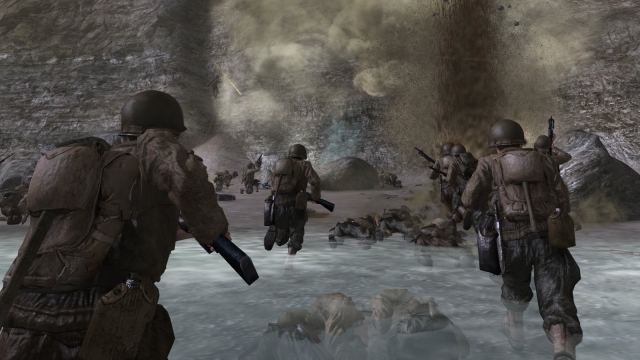
Honourable Mentions: Call of Duty: Finest Hour (2004) and Call of Duty 2: Big Red One (2005)
After the success of the PC releases of Call of Duty and Call of Duty 2, Activision tasked its subsidiary studios to try and replicate the same success on consoles. Arriving for sixth generation consoles, both Call of Duty: Finest Hour and its sequel from a little-known studio Treyarch, Big Red One. Both followed their own continuity with no relation to the PC releases.
Sure enough, at a time where Medal of Honor dominated the console market with its releases of Frontline and Rising Sun, to have Activision hit back with Call of Duty on the console, showed they meant business. Alongside the rise of online multiplayer on consoles and the Xbox 360 on the horizon, one studio, in particular, would prove the success of competitive Call of Duty on console with its later 360 release.
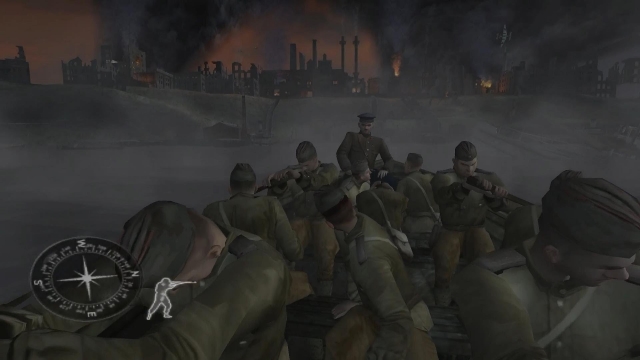
Call of Duty 3 (2006)
Call of Duty 3 at the time of release was eagerly anticipated. After all, it was the first Call of Duty built for the seventh generation of consoles. Placed in the hands of Treyarch, it was an entry to the series that left the PC community somewhat bitter and rather dismissive. This was due to being console exclusive and not a sequel to Infinity Ward's beloved Call of Duty 2, but in fact, a sequel to Treyarch's own Call of Duty 2: Big Red One.
Throwing you right into the action, Call of Duty 3 follows the combined efforts of the Normandy Breakout. This saw Allied and French resistance forces push through the French village of Chambois. It sees players through a campaign taking on the role of a soldier from four of the aforementioned forces.
Despite lacking the innovation introduced in Call of Duty 2, such as regenerating health, Call of Duty 3 was a very consolised experience. Nonetheless, it offered players a well-driven campaign and a 60 FPS multiplayer experience, which by then was a franchises staple.
It is from here, that Call of Duty took a turn and we wouldn't see Treyarch or the return of a second World War entry for another two years. This is because, one year later, gaming history changed with the release of Call of Duty 4: Modern Warfare.
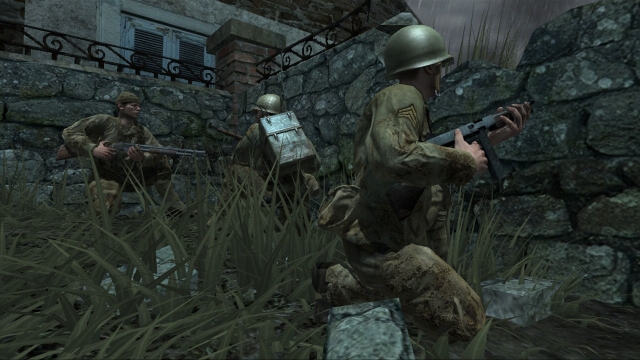
Call of Duty: World at War (2008)
Here we are, the last Call of Duty title before the series hit the modern age and before going ludicrously beyond. Developed by Treyarch, this was their first entry to the series to utilise Infinity Ward’s in-house engine and also the beginning of the yearly, one after the other releases for the two studios.
Still in development during the time of Modern Warfare, many questioned why the series returned back to World War II, especially at a time when the setting became stagnant. With Modern Warfare redefining the genre, why did the studio bother? The simple answer was Call of Duty: World at War was more than just a rehash, it was a proving ground.
World at War places you in the shoes of an American soldier, through the turmoil of fighting against Japanese forces on Makin Island 1942, lead by Sergeant Roebuck who is voiced by Keifer Sutherland. The other side of the story follows a Russian soldier during the Battle of Stalingrad, opening with a sniper duel, lifted from Enemy at the Gates, players are introduced to Viktor Reznov. Voiced by Gary Oldman, Reznov would later become a character at the centre of mind games in Treyarch’s next entry, Black Ops.
In what was somewhat a first for the series, World at War took the series in a more mature, dark and grittier direction, by effectively showing the horrors of war, with blood, gore and dismemberment. Multiplayer, while feeling more like a reskin of Modern Warfare, was still a highly recommended, engaging shooter with a mixture of close-quartered and open maps, now featuring drivable tanks.
World at War also marked the first time the series began to embrace the ridiculous with its Nazi Zombie mode and set in motion Treyarch’s own brand of zombie survival shooting, twisted and mixed with convoluted storytelling and puzzles.
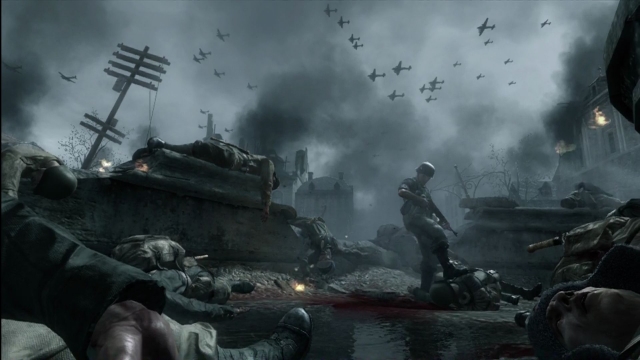
Call of Duty: WWII (2017)
Finally, after 14 years of genre changing, rehashes and many copycats, Call of Duty returns to its roots with Call of Duty: WWII in 2017. Whether the wait is worth it, is yet to be seen. Although, after playing the recent multiplayer betas on console and PC - first impressions weren’t great, but it did show some promise.
Developed by Sledgehammer Games, its second entry to the franchise after 2014’s Advanced Warfare. Although, previously worked on Modern Warfare 3 among others and Infinity Ward.
Set in the European theatre of war, from what we know so far, the campaign only follows the story of an American squad in the 1st Infantry Division, as they battle in the Western Front. While the previously released story trailer showed heavy influences from Band of Brothers. There was one section, if featured, that could potentially raise controversy, as it includes a depiction of the unforgivable and heart wrenching, horrific Holocaust. Whether or not Sledgehammer Games or Activision are willing to push the boundary of what can be depicted in a historical videogame is yet to be seen, but if they do and it’s more than just an acknowledgement, it would be almost commendable.
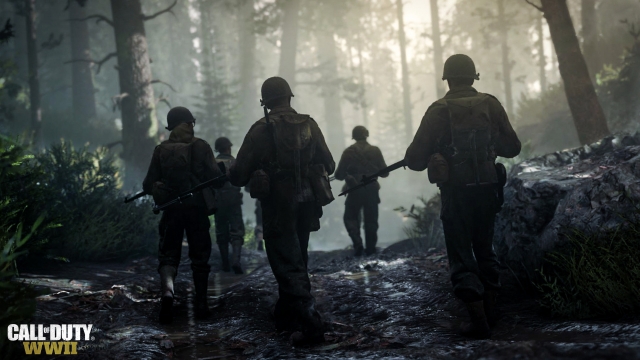
From what we’ve seen, WWII’s multiplayer is certainly making changes, in terms of gameplay, it's got its own version of Battlefield 1’s Operations mode, with a multilayered game mode called War, as well as a new social space, which totally isn’t a testing ground for a potential Call of Duty Destiny.
Regarding controversy: to be honest, the multiplayer is purely catered to meet the needs of all, with the removal of swastikas and having male and female soldiers of all different ethnicities, so in terms of historical accuracy, the multiplayer is pure fantasy.
Personally, I’m more interested in the campaign of WWII. Surprisingly, despite the dullness of the multiplayer in recent years, the campaigns have all stayed rather consistent. Even last year's Infinite Warfare was an enjoyable sci-fi romp.
With Activision’s amalgamation of studios working on releasing a Call of Duty title every year, it was inevitable the series would return to its roots. Whether it’ll be deemed a success, is yet to be seen. One thing is for sure, regardless of the time setting, the series is far beyond its heyday and the demise won’t be by the community, but by the greed of Activision.











COMMENTS